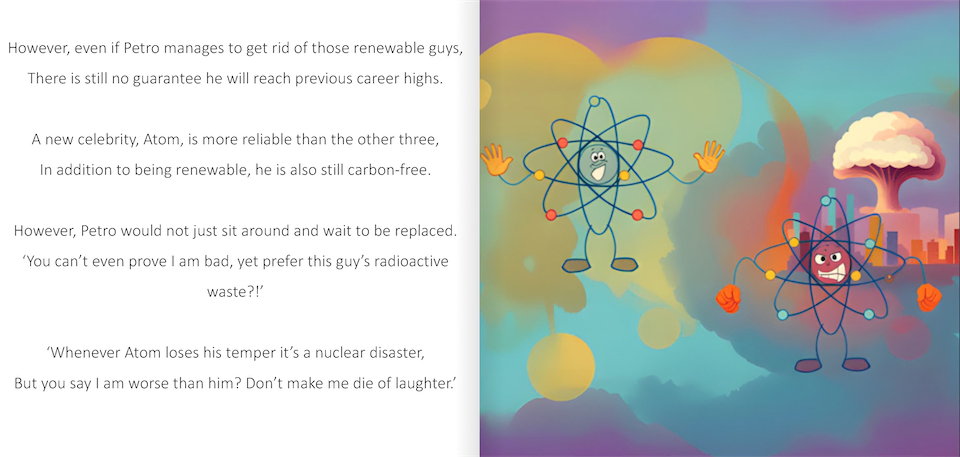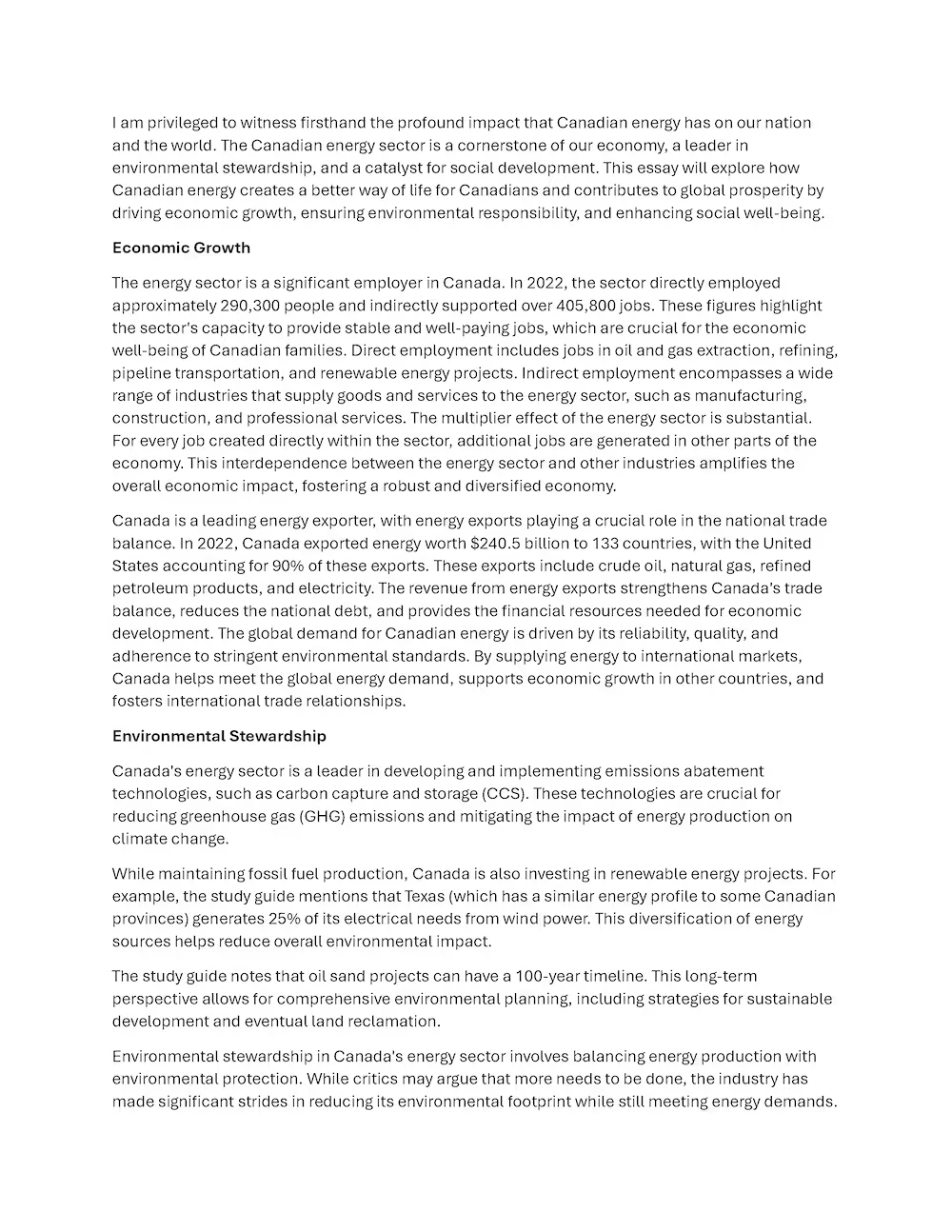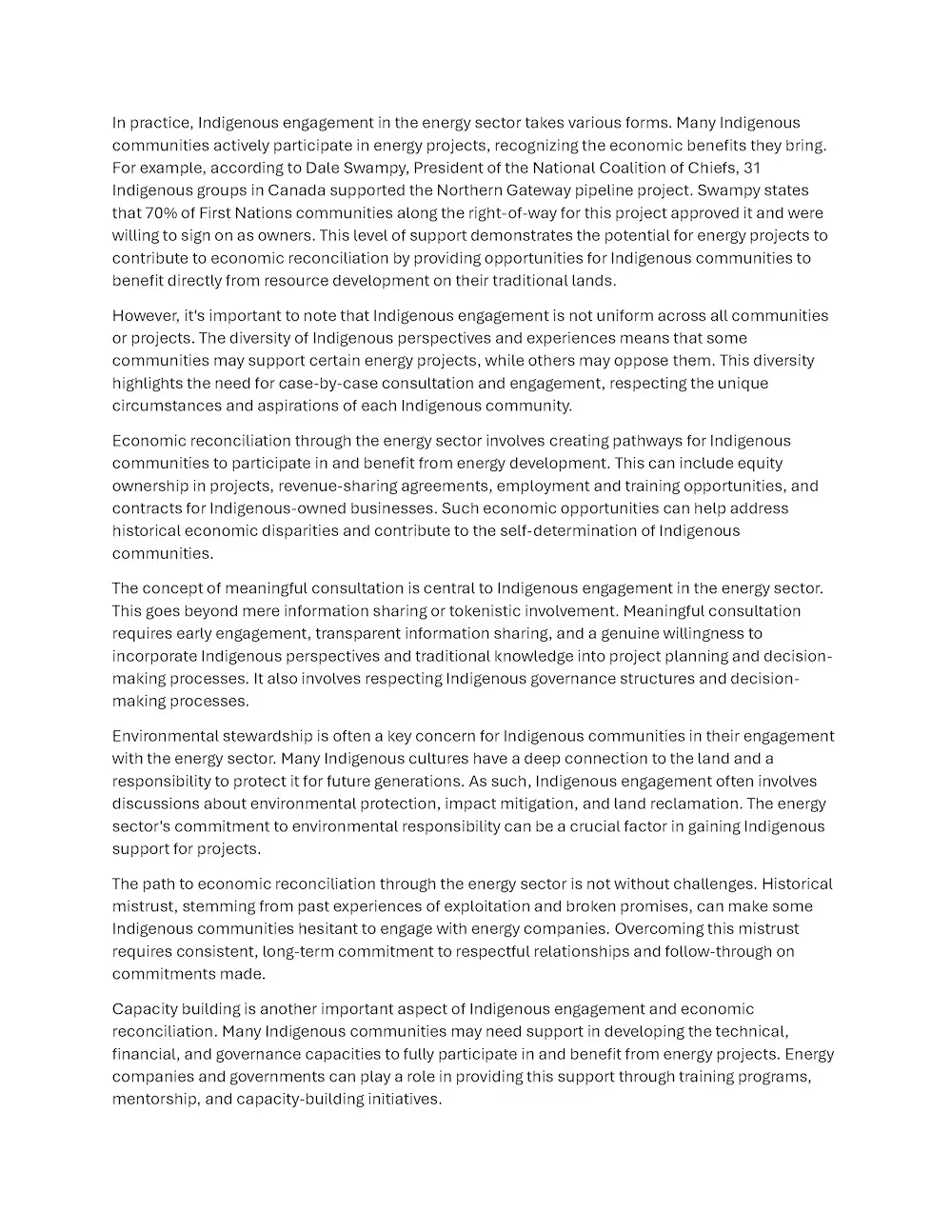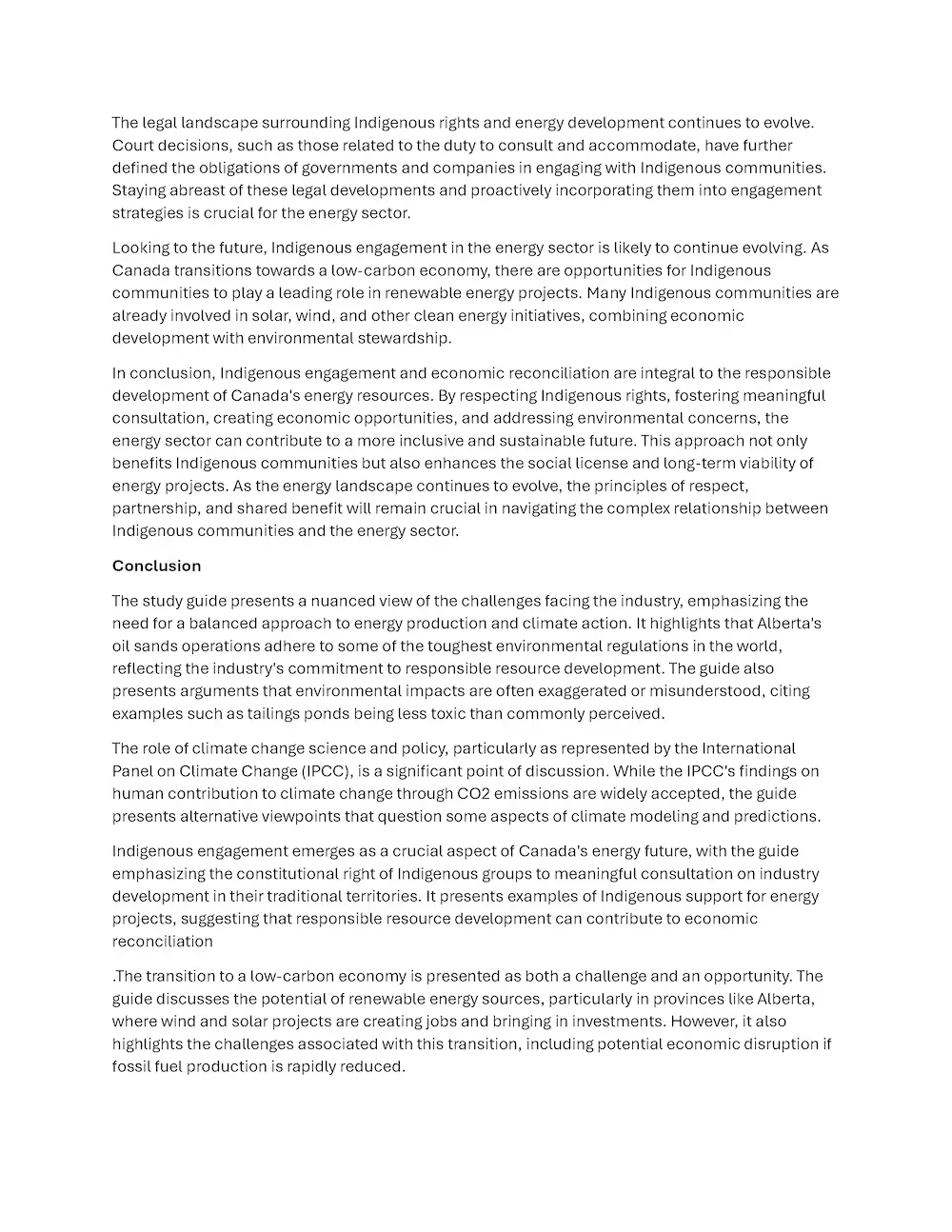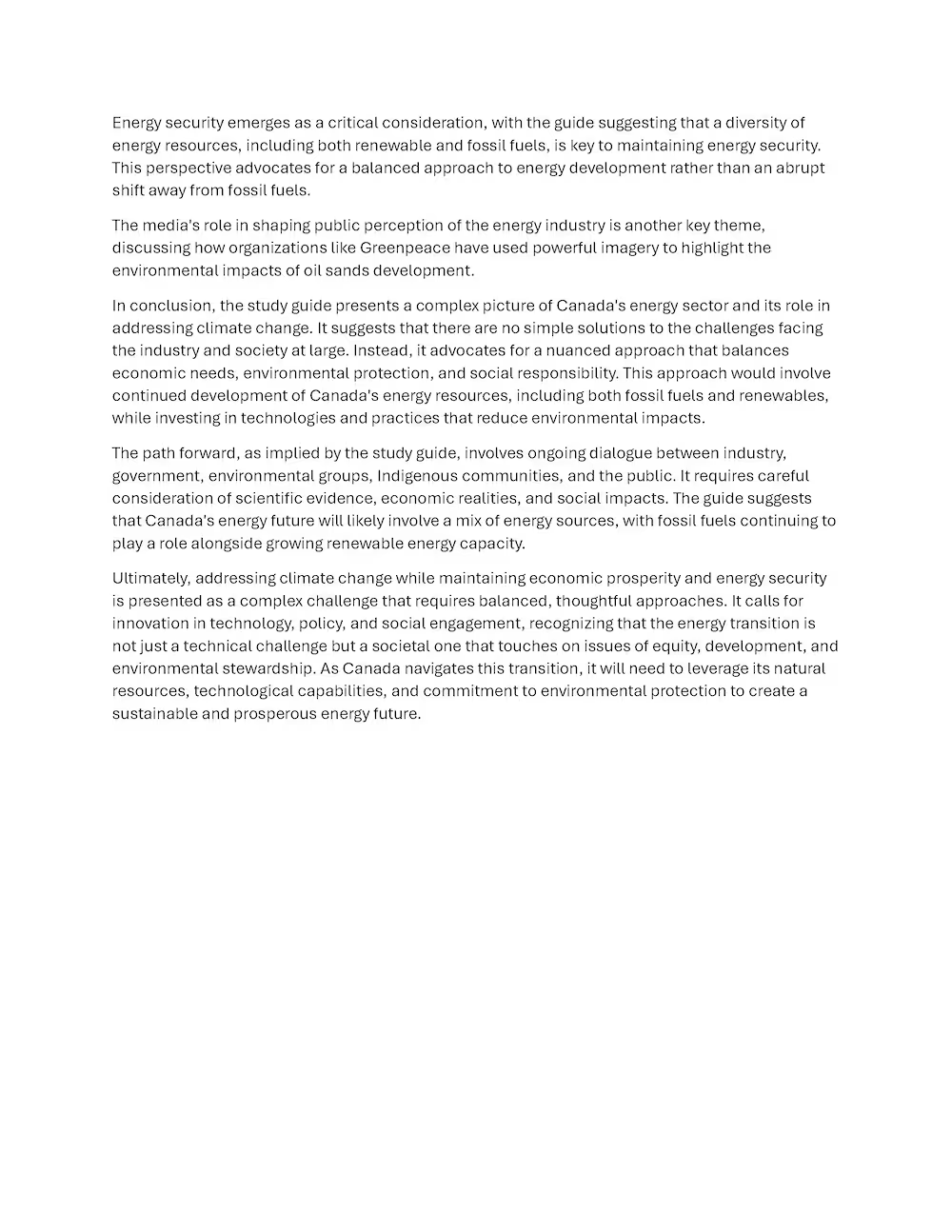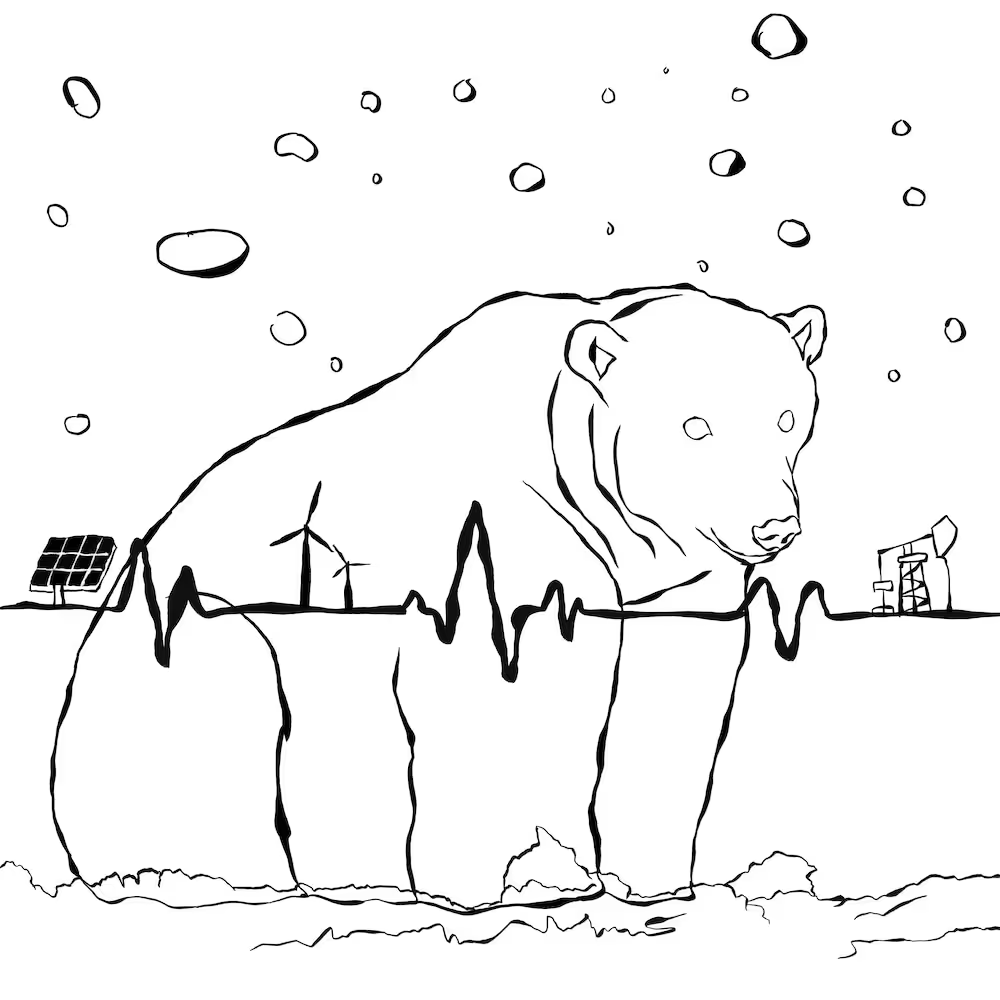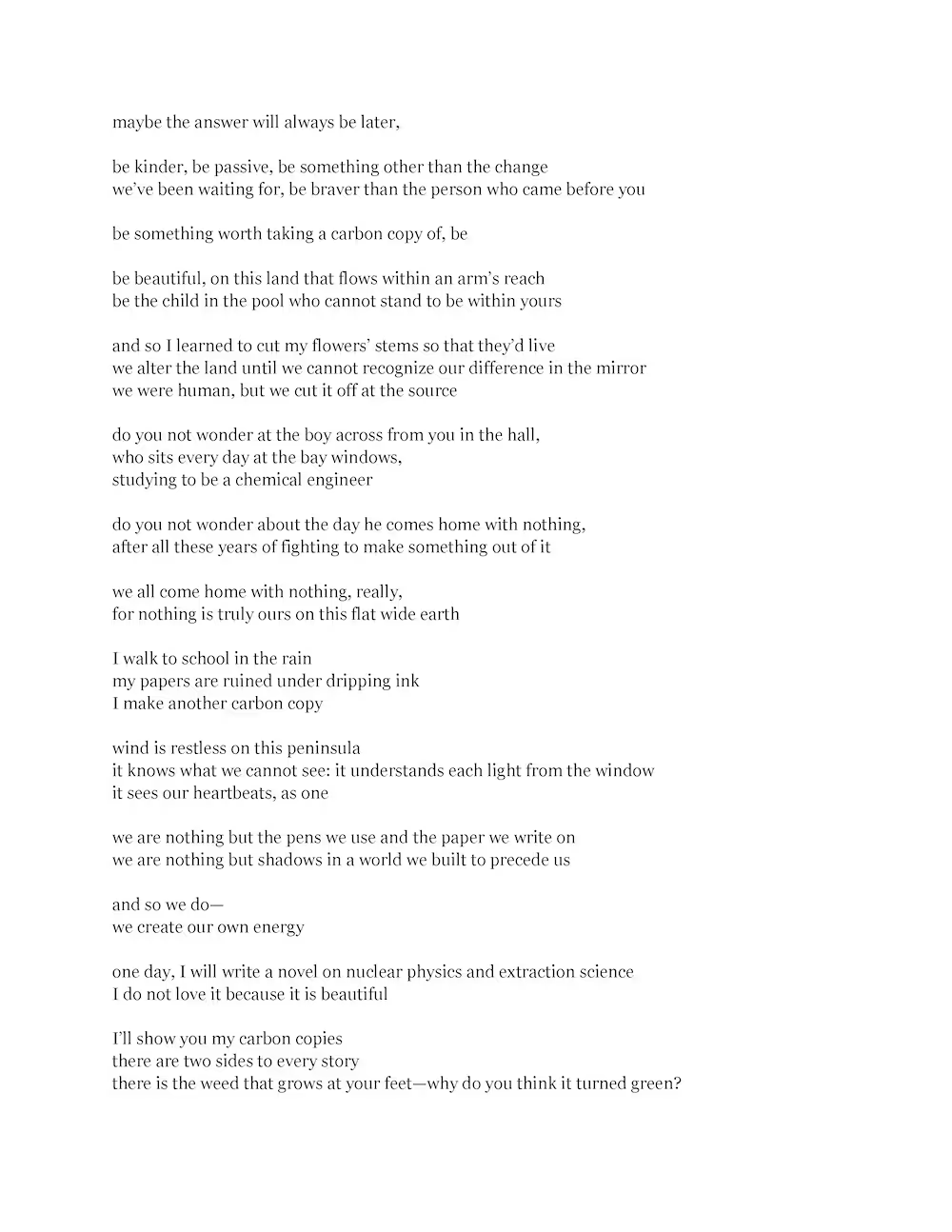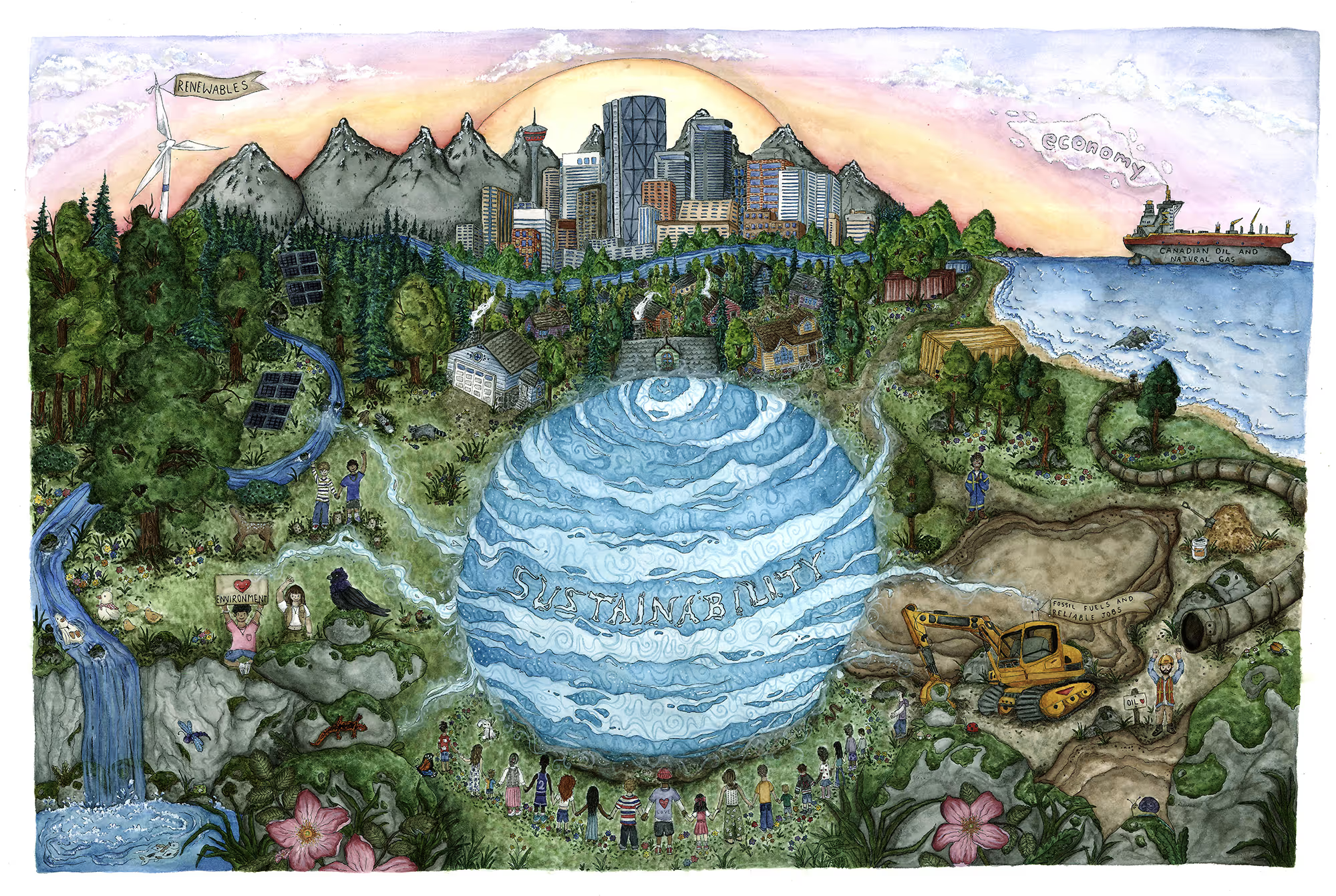Mikayla Hall-Bruce
The Great Energy Showdown
Short Story/Children's Story
My submission is a children's book that explores various energy sectors: hydropower, solar energy, wind energy, nuclear energy, and fossil fuels. I describe both the positive and negative aspects of each type of energy in a format that is easily digestible for elementary school-aged children. Through the use of rhymes and colourful illustrations, I hope to get young Canadian children interested in where their energy comes from and the importance of the Canadian energy sector in their everyday lives.
The first manner in which my book showcases the importance of the Canadian energy sector is that it showcases the diversity of options available to Canadians as energy sources. Canadians have the opportunity to produce their own energy for themselves through the use of personal solar panels to supply energy for their home. Canadians may also live in communities supplied with energy from wind turbines and water dams. Alternatively, Canada also has an abundance of fossil fuels compared to many other nations, which also serves as a source of energy. Finally, Canada is one of the limited number of nations that uses nuclear power to generate energy. Therefore, a key benefit of the Canadian energy sector that my submission highlights is the diversity of Canada's energy sources.
Additionally, an important lesson that I hope for the reader to take away, is that no energy source is perfect and that they all have their strengths and limitations. An aspect of the Global Warning documentary that I admired was that it equally highlighted the advantages and disadvantages of Canada's fossil fuel industry. Therefore, in addition to outlining the many different sources of energy that Canadians have access to, I also wrote about their pros and cons. However, as mentioned previously, the wide array of energy sources that Canadians have access to has ensured that our energy sector is not so dependent on only one source of energy. When energy production via one source stagnates, potentially due to environmental factors such as a drought limiting energy production at dams, Canadians still have access to energy produced via fossil fuels, solar power, wind power, and nuclear power. Canadians can benefit from multiple sources of energy at the same time. Therefore, the second key benefit of the Canadian energy sector that my submission highlights is the stability of energy supply to Canadian citizens via multiple avenues.








